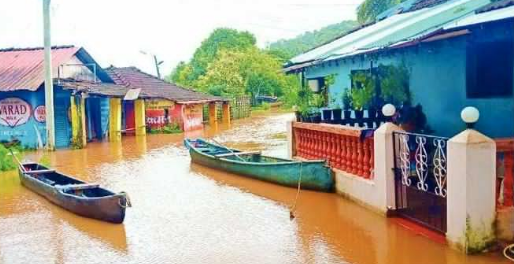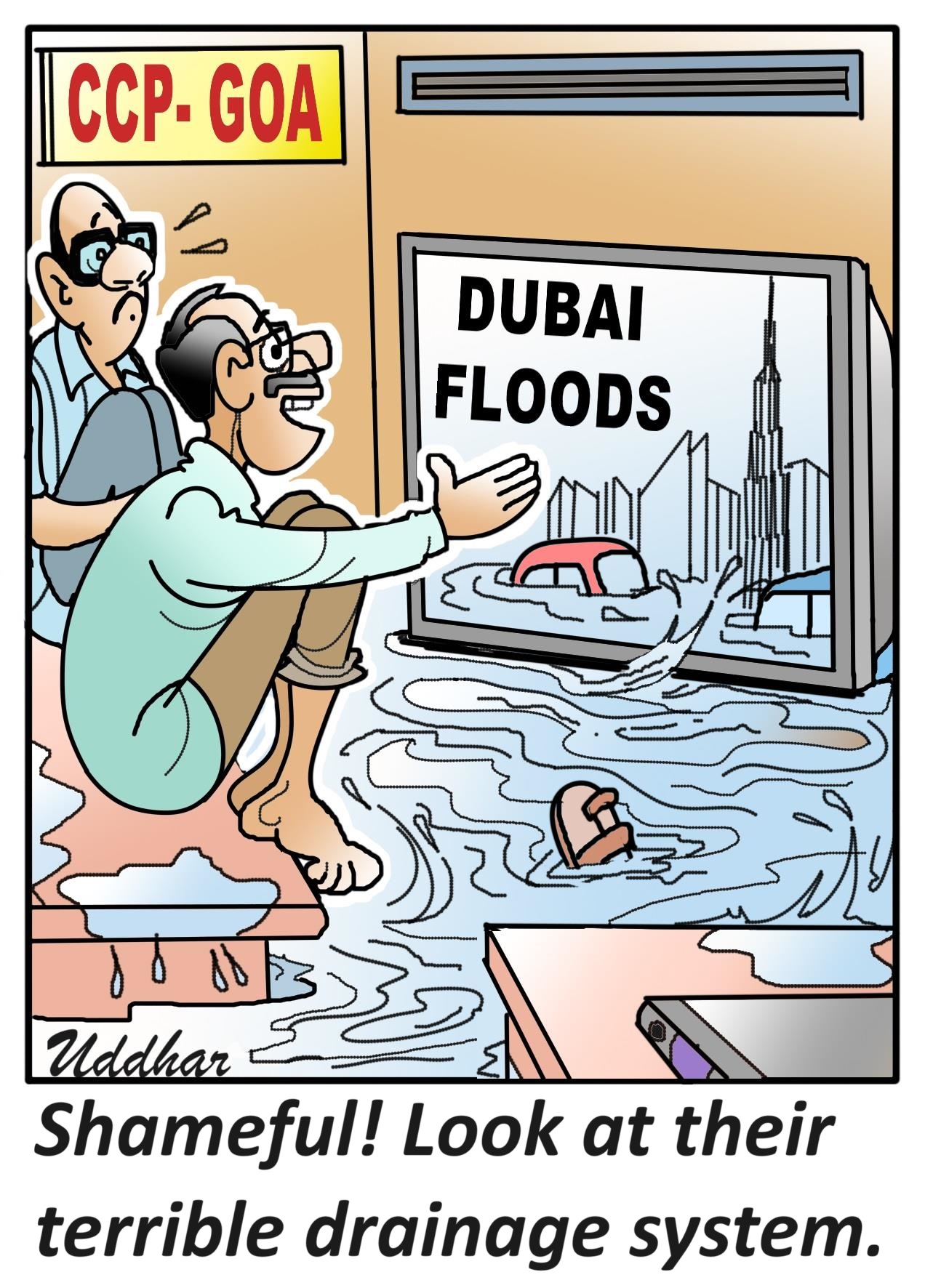
Alexandre Moniz Barbosa
It was a delayed start to the monsoon this year, but by-mid June Goa had received about 66 per cent more than the average rainfall for the period, an indication of just how much it had rained till then. We then came to July and had received more than 60 inches of rainfall early in the month, which is half of the normal. It is early August and Goa has crossed 100 inches of rain. It is still raining and doing so continuously. Currently Goa has received 21 per cent of excess rainfall and there are still almost a couple of months to go before it stops raining, or rather before the IMD stops counting the rain for the season. And where did or does all that water go? Quite simply, down the drains and into the sea is where all the water has been going. Streets got flooded, low-lying areas were inundated, gates of dams had to be opened and then the water just flowed away. The last few weeks has seen copious amounts of water on the streets and roads of the State flowing into choked gutters and then into the sea. Was there any measure initiated to harvest this water for future needs?
It does not take high scientific acumen to develop rainwater harvesting techniques. One method is merely a question of redirecting the rainwater into the ground, so that the ground water table is recharged. Goa receives on an average around 100 to 120 inches of rain in the four months from June to September. Last year it was an abundant monsoon that led to 150 inches of rain. Unfortunately, much of this water had flowed into the sea and the State appears to have not learnt that it can save this water. Harvesting of rain water is merely an action of collecting and storing it, preventing the loss of water through evaporation and seepage, and some more technically-aimed measures to conserve this resource that is billed to be the issue over which wars will start in the future. The rainwater can be used either directly or recharged into the ground. Efforts made in the past towards rainwater harvesting have been sporadic and have not shown positive and sustained results.
Goa has a number of water bodies, but its demand for water is also increasing proportionate to the development that is taking place in the State. The rising number of residential complexes, population increase, industries and construction are one, but in the years ahead, once the Mopa airport becomes a reality the population is set to grow exponentially, which will put massive pressure on water demands. It will have to be mandatory for all mega projects – residential complexes and industries – to have their own water harvesting measures in place, at the time of issuing licences. But then the water harvesting has to start now. These measures cannot remain as plans or merely on paper, so the government will need to ensure that the water harvesting measures that are proposed to be undertaken by private projects are actually implemented.
Not that the State has not made efforts to harvest the rainwater. It has, but these have remained on paper. It offers susbisides to individual houses and residential complexes that have rainwater harvesting measures. These remain as incentives, what is required will be rules that have to be strictly implemented making it mandatory for all new project to have rainwater harvesting. The State had decided last year to write to the Centre seeking approval to convert mining pits into rainwater harvesting sites. It had also decided to construct check dams on the rivers to increase the water reserves. What happened to all these plans and decisions? Like so many other government decisions these did not go beyond the planning stage.
India is slated to become a water deficient country in the decades ahead. The summer of 2019 had seen a water crisis in the State, as villages across Goa complained of inadequate supply. There were visible signs of a water crisis. People had queued up for water from tankers, and some had cleaned up their unused wells to meet their water needs. Private water tankers had been in demand, and were especially seen outside starred hotels filling up their dry water tanks. The situation this year was not so bad, in fact there were no complaints of lack of water. But then, the summer months coincided with the lockdown that put a halt to all construction activity and so too all tourism businesses that use the maximum of water. Would this also mean that Goa has enough water for its population, but not for the extra that is required for industrial, construction and tourism use? If so, Goa cannot claim that it has abundant water supply.
In the current circumstance where the State receives over 100 inches of rain a year – most of it in four months – allowing the rainwater to merely flow into the sea is unacceptable, and there can be no excuses for not working a system of harvesting the rainwater. For the immediate future, for the many months ahead before the next monsoon arrives, Goa has to replenish the groundwater tables by storing as much water as possible. But, it also needs to have a long term plan that looks at creating a sustainable water harvesting system that is easy to implement and practical. We are receiving a good amount of rain this year, and so too did we receive last year, but this may not be the case always, as the previous years did see the rainfall at below the normal.
What also needs to be taken into consideration is that fact that the State is in a protracted battle with Karnataka for its share of the River Mhadei water, which makes it mandatory that Goa should be more pragmatic on water conservation. We have definitely missed the bus in augmenting the water harvesting capacity this season, but this should not repeat next year. Given that there is a gap of eight months of a dry spell during which which much can be done, why doesn’t Goa get its act together in this period to keep its groundwater table brimming to capacity? A few private residences and even industries have been working on rainwater harvesting, but to make it really yield results the efforts have to be mandated by the government.
Alexandre Moniz Barbosa is Editor, Herald. He tweets at @monizbarbosa
